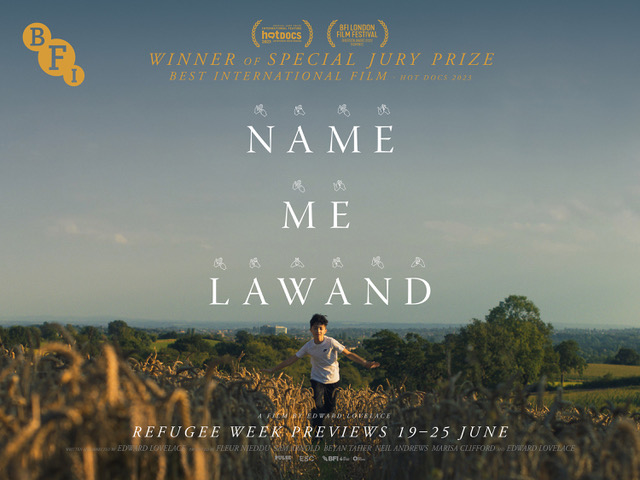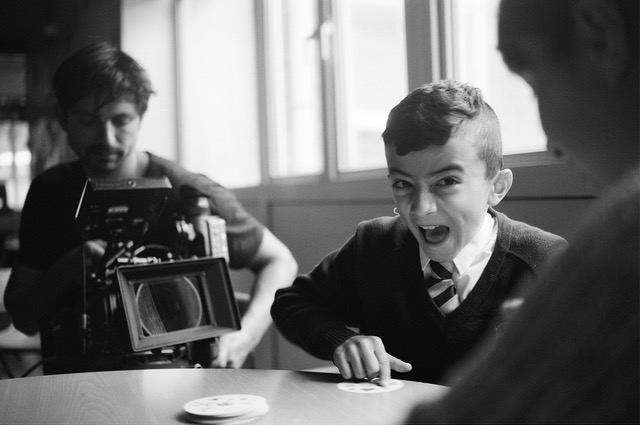An interview with director/writer Edward Lovelace
- Edward, can you share a bit about your background and what inspired you to become a film director?
I grew up in a family of artistic people. My parents were brave and bold in their life and career choices and that definitely inspired me to go after my dreams of becoming a storyteller in cinema and film. I was obsessed with movies growing up, it’s how I understood my place in the world and my understanding of identity. Movies were in my head all of the time. The moment when I began to think that the way I saw visual storytelling had a place, was when I discovered the work of Gus Van Sant. Watching his films, especially Elephant, Gerry, and My Own Private Idaho somehow unlocked something inside of me – it showed me that the form of film, the rules of film, are still sort of finding their place and there is still room to not just make great films – which all of Van Sants were, but also to make films in a new way. That allowed me to believe that I could too one day tell stories on screen. I met Van Sant once in a coffee shop in Los Angeles and told him that he was my inspiration.
- Your most recent work is ‘Name Me Lawand’ a documentary featuring a deaf Kurdish child. How did you find out about Lawand’s story?
I saw a photo by chance of Lawand and his brother Rawa in their house in Derby when they first arrived in the UK. In the photo, taken by an incredible photographer called Stephen Lliffe, it showed these young boys looking out of their bedroom window over their new town, with the reflection of a new world in the glass. It spoke to me for a number of reasons. It made me think of me and my brothers and also the way I have always looked out towards horizons. I’m pretty obsessed watching the sunrise and set and this image just seemed to connect on a deep level. I read up about Lawand and his family and learnt they had been on this long and hard journey from Iraq to the UK and they didn’t have one common language between them. They all communicated in different forms other than Lawand who had no language at all. I began to think about how maybe a film being made with them might provide some type of means of new communication for them, that was my initial thought and ambition.
- What was the main reason(s) for your decision to make the documentary?
Once I had connected with Lawand and the incredible school that had taken him in – the Royal School for Deaf Derby – a British Sign Language school that is one the most magical places I’ve ever seen, I started to learn to sign myself so I could build up an understanding with Lawand and his teachers. Learning sign was such a joy and really changed the way I think about language in many ways, and once Lawand and I began to build a friendship I thought a film about his life and his journey could be really important – to discus themes about language and most importantly our right to choose the language we want to communicate in. But it was a few months later when he told me about how a film, if there was one to be made about him, would need to be very visual and go beyond just the confines of his bedroom. He wanted it to be “big” and visual, focussing on his friendships as much as his journey as a refugee. That was the moment for me, when I wanted to give Lawand a film that he could watch and represent not just the physical journey he had been on, but the emotional one.
- Were there any challenges during production? Did you have interpreters on set or do you sign?
I have been learning sign for the last 4 years and when we were shooting the film I was learning one on one with my BSL Teacher for many hours a week. Lorraine, my teacher, is one of my heroes. That allowed Lawand and myself to have a really special friendship. He loves football banter and our chats about the best players and teams were super fun – he’s hilarious. But we had many deaf crew with us, mainly our deaf producers and my key collaborators Sam Arnold and Sean Chandler. They really helped create the atmosphere on set and their relationship with Lawand and his friends was truly special. It felt very much like a family on set. Every decision on set and in the editing room, however big or small, was made with the entire team involved, deaf and hearing filmmakers all together, communicating verbally and in sign.
- Would you consider working with deaf talents again or deaf crew members on any future projects?
On this film I really found a new film family, and I’m already working on future projects with many of them. Sam and Sean (both deaf filmmakers) are now friends for life and they are incredible artists that I count myself lucky to be still working with. On both projects that focus on themes connected to deaf identity and to the importance of BSL, and also projects that aren’t about the deaf experience, I’m continuing to work alongside these amazing filmmakers and hope to do so for years to come.
- How do you consider the audience’s perspective when creating a film? Do you have a specific target audience in mind during the creative process?
For me, when I am making a film, I’m thinking solely about the contributors. Creating a film that is truly an extension of them, that feels like it’s connected to them, that’s the goal. I’m not really in interested in making films “about” my subjects, but rather alongside them, with them in every part of the process. When it comes to the idea of people seeing the film, I think about them, will they watch it and feel like it authenticity represents their story and celebrates their experience. They are my audience and any victory for the film is there in the room when they watch it and feel positive about it. I believe if they connect with it and I do that part of the process service, then a wider audience will connect with it too, but i don’t think about them really until after the contributors have seen it. Specifically on this film Iwas also thinking lots about a promise I made to Lawand – he wanted the film to connect with both deaf and hearing audiences. He loved the idea of hearing kids in his community watching it and being affected by it, in the same way as his deaf friends. So when the film was released through the BFI in cinemas in the Summer of 2023 we worked really closely with them in ensuring that the film reached both the deaf community in a huge way but also hearing audiences who might learn something new about deaf culture and BSL. It’s one of our proudest achievements with the film that the deaf community really took the film and made it their own. It’s something that makes the whole filmmaking process worthwhile.
- What do you hope audiences will take away from watching ‘Name Me Lawand’?
The audience seeing a story about friendship, about finding your place in the world, about finding a sense of home inside yourself, those are the themes that I feel the film focuses on. The idea that we get to see a refugee story but a truly human one away from all the headlines, and also an uplifting one is really important to me and something that Lawand is very passionate about.
- What advice do you have for aspiring deaf directors who are interesting in starting a career in film?
I don’t think I need to give any advice to any deaf filmmakers out there, either established or just starting out. I’ve met some amazing deaf artists and storytellers in the last 4 years, and I’m in awe of them, their talent and their perspective on what film can and should be. Their work amazes me and I’ve learnt so much from them. To any aspiring filmmaker, from whatever background or whatever identity, my advice is to be brave and make work that you feel has to be made, work that will change the way we think about and understand the world around us.
- Do you have any advice for the film industry to make it more inclusive and accessible for deaf creatives?
Through my friendships with many deaf filmmakers and deaf artists I know that many positive things are happening to do with inclusivity and accessibility on set and in production – but this very much feels like the beginning of that journey. I think the industry needs to truly learn from these amazing filmmakers and do everything they can to make every film set entirely available and welcoming to whoever is telling the story and making the film. I think the industry often tells us how inclusive it is, whereas I know from personal experience that in practice that isn’t always the case, so there is much to do. Tell/talk less, and learn more… is what I think the industry should be doing.



